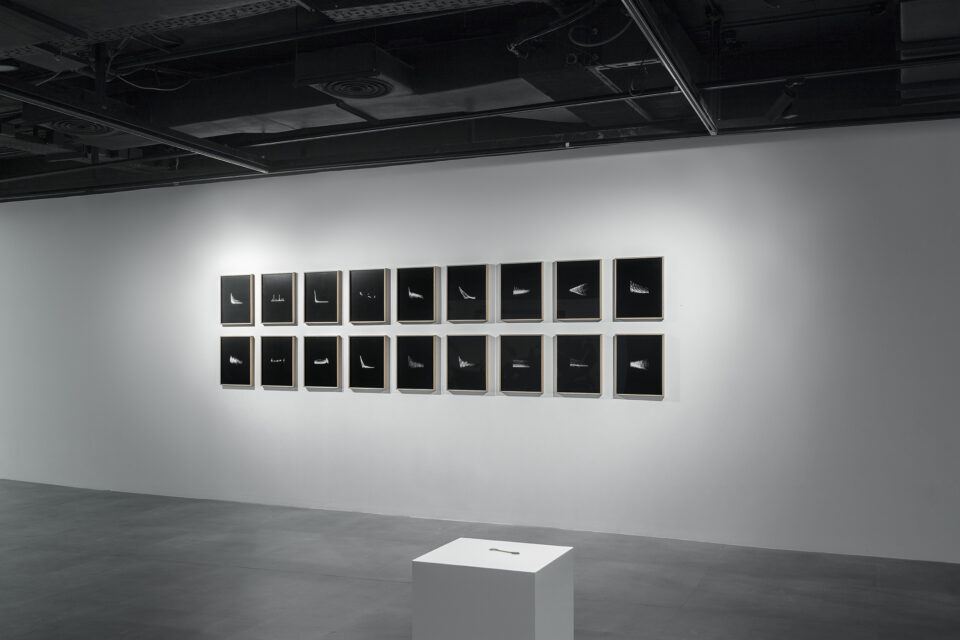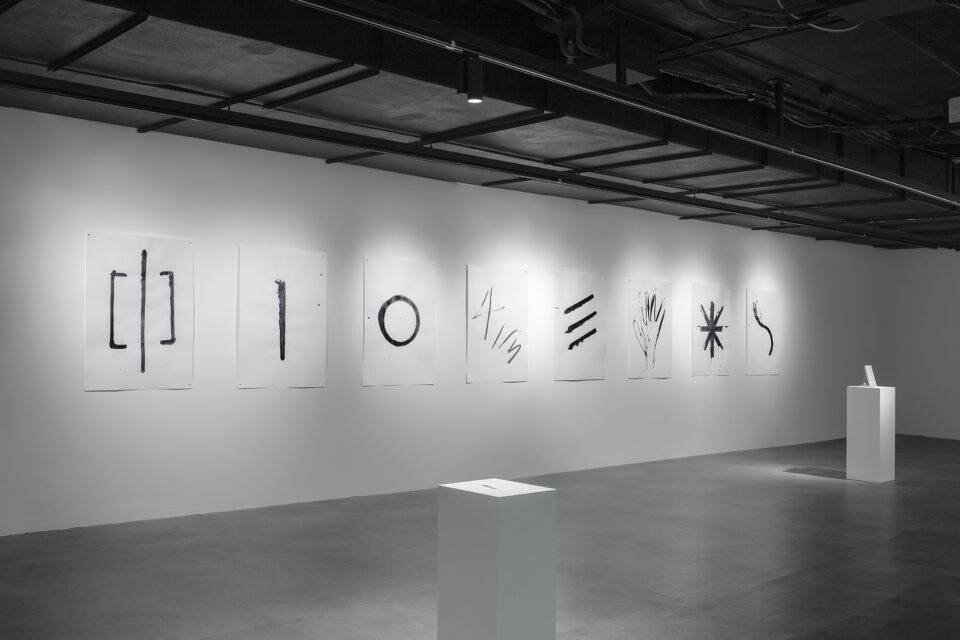Cero punto
Andrés Ramírez Gaviria’s artistic project is often interpreted primarily within the realm of conceptualism, due to the significant research that underpins it and the specialized insights that support it, particularly in scientific fields. While this conceptual valuation finds valid support in philosophical aspects, it undermines the appreciation of the rich formal experimentation that underlies the various formal solutions the artist employs in each work.
Gaviria’s works emerge from a rigorous effort and experimentation with materials and technical procedures, refining poetic and semantic issues alongside formal ones. Each work in this exhibition exemplifies this. Each represents a path of investigation in organic communication with others, while simultaneously seeking the right medial tuning for each content. Among many examples that could be cited, works like 0. and the series Sources offer telling guides.
0. (2008-2023), the work that lends its name to this exhibition, can be understood as a work in progress that spans the career of Andrés Ramírez Gaviria. Its initial concept arose from a confluence of ideas about time, space, and the fundamentals of Minimalism, ideally articulating the notion of the zero point. In the artist’s words: “This concept of zero point, with its various meanings and manifestations in different fields, proved to be a valuable framework for exploring interconnected ideas. In mathematics, for example, the origin point, often represented as 0, serves as a fixed reference for the surrounding geometric space. In quantum theory, the vacuum state represents the lowest energy state, sometimes referred to as the zero-point field. In art, this term has also been used to symbolize a point of origin or convergence, a state of perfection.
(…) I wanted to extrapolate concepts of reduction and singularity by initiating an event where two opposing impulses seem to coexist. First, an act of destruction manifesting as a contradiction to the spirit of categorical rationality. Secondly and simultaneously, a controlled and systematic situation where this very destruction is carried out. Thus, the work appears to exist in this double dilemma, presenting both a thesis and an antithesis.”
In each new instantiation of this series, this tension is maintained, insisting on the operation that takes the minimalist principle of less is more to its ultimate expression. At the same time, each interpretation of the work involves small formal variations, whether in constructing the cube, video recording, or editing. Each turn adds elements that allow a broader understanding of the material implications in the visualized formulation. The black contrast in the 2023 version, in addition to referencing Kazimir Malevich’s black square and suprematist ideals, provides a different view of the implosive event. Previous experiments of 0. favored transparency and lightness, which helped reveal spatial depth. In transparency, once the destructive action begins, the illusion of flatness disappears as it is immediately discovered that the collapse has occurred within a cubic structure.
Despite the planning and care the artist invests in each experiment, each carries significant surprises. In real-time, the implosion occurs in an instant, a surprise at such a speed that it is almost imperceptible. To contemplate the event in detail, the videos are recorded with a high-speed camera. The final image results in an expanded study of time, making visible the grace implicit in every minimal movement.
Beyond the years of preparation and research required for each of the artist’s works, their development often remains open. Sources is a telling example. This series began in 2012 from a fruitful dialogue with several astronomers. In this, the artist delved into understanding the strategies through which knowledge and information are generated in astronomical observatories focused on reading radio waves. Radio telescopes are designed to receive and interpret waves emitted by stellar objects millions of light-years from Earth. To infer the characteristics and behaviors of the sources from which signals are received, a chain of specialized translations is necessary, a central theme in Gaviria’s project. Many of his works reflect on the formal successions created in interpretive life, affecting any event or proposal.
The first translation of the radio wave is algorithmic. Then it is is translated into an image, one of many possible interpretations, which indicates that each of these interpretation vary according to the objective focus and intention, revealing the subjectiveness inherent in presumably precise information.
The interpretation carried out by Gaviria, with the collaboration of astronomers, emphasizes visuality and its poetics. For this reason, the artist explored new translation possibilities in photographic laboratories, allowing him to convert digital files to analog photography. The displayed images are silver gelatin prints. As with all Gaviria’s work, this piece is a sensitive journey into the complexity and depths of existence’s mysteries, traversing unnoticed barriers erected by visions that may have overlooked an artistic and philosophical perspective born from the persistent and articulating exercise of contemplation.






